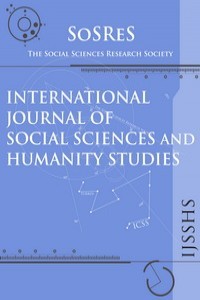TOWARDS SUSTAINABLE ENTREPRENEURIAL PRACTICES IN SOUTH AFRICA: SELECTED CASE STUDIES
TOWARDS SUSTAINABLE ENTREPRENEURIAL PRACTICES IN SOUTH AFRICA: SELECTED CASE STUDIES
sustainable tourism, entrepreneurs South Africa,
___
- Allen, J., O’Toole, W., Harris, R. & McDonnell, I. (2008), Festival and Special Event Management. 4th ed. (Wiley Australia Tourism Series), Wiley, Australia.
- Brown, S. & James, J. (2004), “Event Design and Management: ritual sacrifice?”, (in: I. Yeoman, M. Robertson, J. Ali-Knight, S. Drummond & U. McMahon- Beattie-Eds., Festival and events management: an international arts and culture perspective), Massachusetts: Elsevier.
- Bruntland, G. (1987), Our Common Future: the World Commission on Environment and Development. Oxford: Oxford University Press.
- Collins, A., Jones, C. & Munday, M. (2009), Assessing the environmental impacts of mega sporting events: two options? Journal of Tourism Management, Vol. 30, No. 6, pp. 828-837.
- Derrett, R. 2004: “Festivals, events and the destination”, (in: I. Yeoman, M. Robertson, J. Ali-Knight, S. Drummond & U. McMahon-Beattie-, U-Eds., Festival and events management: an international arts and culture perspective), Massachusetts: Elsevier.
- Dickson, C. & Arcodia, C. 2010. Promoting sustainable event practice: the role of professional association. International Journal of Hospitality Management, 29(2):236-244.
- Getz, D. (2008), Event tourism: definition, evolution, and research. Journal of Tourism Management, Vol. 29, No. 3, pp. 403-428.
- Hunter, C. & Shaw, J (2007), “The ecological footprint as a key indicator of sustainable tourism, Journal of Tourism Management, Vol. 28, No 1, pp. 46-57.
- Queiros, D (2003), “The Natural Resource Base”, (in: Berendien Lubbe-Ed., Tourism management in Southern Africa), Cape Town: Maskew Miller Longman. Reid, R.E. (2006), “A Journey to Define Sustainability: Waterton Lakes National Park”, (in: I M Herremans-Ed., Cases in Sustainable Tourism), New York: Haworth Hospitality Press.
- Tassiopoulos, D. (2005), Event management: a professional and developmental approach, 2nd ed. Cape Town: Juta.
- Wight, P.A. (2004), “Practical Management tools and approaches for resource protection and assessment”, in: D. Diamantis-Ed, Ecotourism: management and assessment, London: Thomson.
- www.golimpopo.com (Ribolla Art Route)
- www.jhghouse.com (Jan Harmsgat Country House) www.spier.co.za www.stormsriver.com
- Başlangıç: 2009
- Yayıncı: Sosyal Bilimler Araştırmaları Derneği
RELATIONSHIP BETWEEN AFFECTIVE COMMITMENT AND ORGANIZATIONAL SILENCE: A CONCEPTUAL DISCUSSION
THE BARRIER TO SOCIAL DYNAMICS IN TURKEY: AUTHORITARIAN MENTALITY AND STATISM
Nadir ATEŞOĞLU, Öztürk AKÇAOĞLU
VALUE ORIENTATIONS AND MOTIVATIONAL STRUCTURES IN DANCE STUDENTS
MODELING MONETARY POLICY RULES IN THE MENA COUNTRIES: ISSUES AND EVIDENCE
THE EFFECTS OF KNOWLEDGE ECONOMY ON THE COSTS AND COST COMPARISON OF TRADITIONAL AND DIGITAL GOODS
Mohamed S. EL-DEEB, Yasser TAWFİK, Mohga Bassim, Emad Elwy
THE INTERNATIONAL STUDENTS’ PERCEPTION TOWARDS THE EDUCATION QUALITY
Azizah Rajab, Hamidah Abdul Rahman, Roziana Shaari
THE ESTIMATION OF THE RELATIONSHIP BETWEEN WAGES AND UNEMPLOYMENT IN THE EUROPEAN UNION
